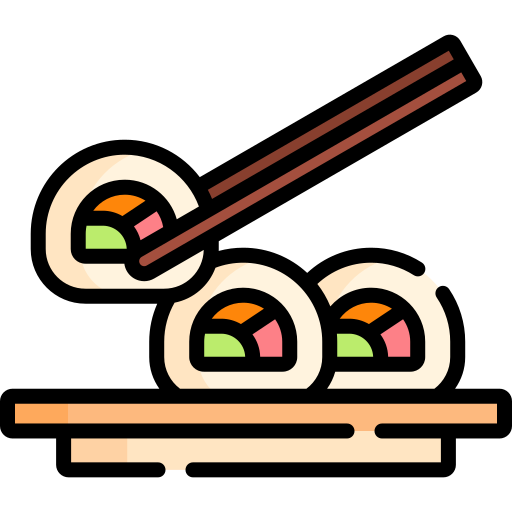The sizzle of a perfectly marbled wagyu steak on a teppanyaki grill. The meticulous precision of a sushi chef crafting nigiri with decades of practiced expertise. The comforting warmth of a bowl of ramen on a chilly evening. Japanese restaurants offer culinary journeys that engage all senses, transforming meals into memorable experiences that extend far beyond mere sustenance.
With over 500,000 monthly searches in the United States for “Japanese restaurants,” it’s clear that Americans have developed a deep appreciation for Japan’s diverse culinary traditions. Whether you’re seeking the refined elegance of kaiseki dining, the interactive entertainment of hibachi, or simply craving a satisfying bowl of udon, understanding the various styles of Japanese restaurants will enhance your dining adventures.
In this comprehensive guide, we’ll explore everything you need to know about Japanese restaurants—from understanding the distinct varieties and regional specialties to ordering like a local and navigating dietary preferences. Whether you’re a Japanese cuisine novice or a seasoned connoisseur, this guide will deepen your appreciation and knowledge of authentic Japanese restaurants.
Want to explore Japan’s culture?
Discover Japan’s rich culture, traditions, and hidden gems with our expertly crafted guides. Get insider tips on travel, food, and history. All for free!
Types of Japanese Restaurants: Beyond Sushi and Ramen
When most Americans think of Japanese restaurants, sushi and ramen often come to mind first. However, Japan’s culinary landscape offers much greater diversity. Understanding the different types of establishments will help you find exactly what you’re craving.
Specialty Japanese Restaurants by Cuisine
In Japan, restaurants typically specialize in one style of cooking, perfecting their craft rather than offering extensive menus spanning multiple cuisines. Here are the major categories you’ll encounter:
Sushi-ya (寿司屋): The Art of Sushi
Sushi restaurants focus exclusively on raw fish preparations with vinegared rice. Within this category, you’ll find:
- Traditional Edomae sushi – Focusing on classic nigiri with minimal embellishment
- Kaiten-zushi – Conveyor belt sushi offering affordable options
- Omakase establishments – Chef’s choice dining experiences at the counter
- Modern fusion sushi – Creative interpretations incorporating global influences
The intimate counter experience at high-end sushi establishments allows diners to observe and interact with the itamae (sushi chef), adding an educational dimension to the meal.
Ramen-ya (ラーメン屋): Noodle Soup Perfection
Ramen restaurants specialize in wheat noodles served in savory broth, often topped with sliced pork, soft-boiled eggs, and vegetables. Regional variations include:
- Tonkotsu – Rich, creamy pork bone broth (Fukuoka specialty)
- Shoyu – Clear soy sauce-based broth (Tokyo style)
- Miso – Hearty miso-flavored broth (Hokkaido specialty)
- Shio – Delicate salt-based broth
Authentic ramen-ya often feature vending machine ordering systems, counter seating, and a focus on quick service—true to the “fast food” nature of ramen in Japan.
Izakaya (居酒屋): Japanese Gastropubs
Izakaya restaurants function as casual drinking establishments with extensive food menus designed for sharing. Popular at these Japanese restaurants are:
- Yakitori – Grilled chicken skewers
- Karaage – Japanese-style fried chicken
- Sashimi platters – Assortments of raw fish
- Edamame – Steamed soybeans with salt
- Okonomiyaki – Savory pancakes with various toppings
The lively, communal atmosphere of izakayas makes them perfect for group dining and experiencing a wide variety of Japanese flavors in one sitting.
Teppanyaki (鉄板焼き): Theatrical Grilling
Teppanyaki restaurants (often called hibachi in America) feature chefs cooking on large flat iron grills directly in front of guests. These Japanese restaurants offer:
- Interactive dining experiences with chef performances
- High-quality proteins like wagyu beef and fresh seafood
- Grilled vegetables seasoned with simple seasonings
- Fried rice prepared tableside
As we explored in our Hibachi Near Me guide, these restaurants are particularly popular for celebrations and group outings due to their entertainment value.
Kaiseki (懐石): Japanese Haute Cuisine
Kaiseki restaurants represent the pinnacle of traditional Japanese fine dining, offering:
- Multi-course seasonal tasting menus
- Artistic presentation emphasizing natural beauty
- Precise cooking techniques highlighting ingredient quality
- Harmonious progression of flavors and textures
These refined Japanese restaurants typically provide private dining rooms and personalized service, making them ideal for special occasions and business meetings.
Other Specialized Japanese Restaurants
- Tonkatsu-ya – Specializing in breaded, deep-fried pork cutlets
- Udon-ya and Soba-ya – Focusing on thick wheat or buckwheat noodles
- Okonomiyaki-ya – Dedicated to savory pancakes grilled at the table
- Shabu-shabu and Sukiyaki – Hot pot dining with thin-sliced beef
- Tempura-ya – Perfecting lightly battered and fried seafood and vegetables

Elements of Authentic Japanese Restaurants
Beyond cuisine type, certain characteristics help identify truly authentic Japanese restaurants worth visiting.
Atmosphere and Design
Authentic Japanese restaurants typically feature:
- Minimalist aesthetics emphasizing natural materials
- Thoughtful spatial design that feels both efficient and peaceful
- Attention to seasonal elements through decorations and menu items
- Proper lighting that highlights food presentation
The ambiance often reflects Japanese concepts of harmony and simplicity, creating dining spaces that feel distinct from other Asian restaurants.
Service Philosophy
The service at genuine Japanese restaurants is characterized by:
- Omotenashi – Selfless hospitality focused on guest comfort
- Attentiveness without intrusion – Staff available but not hovering
- Precise timing of courses and beverage service
- Knowledge of menu items and preparation methods
These service elements contribute significantly to the overall experience and authenticity of Japanese restaurants.
Essential Japanese Restaurant Vocabulary
Familiarizing yourself with basic terminology enhances your experience at Japanese restaurants:
- Irasshaimase (いらっしゃいませ) – “Welcome” greeting when entering
- Osusume (おすすめ) – Chef’s recommendations
- Omakase (おまかせ) – “I leave it to you” (chef’s choice menu)
- Itadakimasu (いただきます) – Said before eating, expressing gratitude
- Gochisousama deshita (ごちそうさまでした) – Said after eating, expressing thanks
For more useful phrases to enhance your dining experience, our 100+ Essential Japanese Phrases guide provides pronunciation help and cultural context.
Regional Specialties at Japanese Restaurants
Japan’s distinct regional cuisines are increasingly represented in specialized Japanese restaurants across America.
Kansai (Osaka/Kyoto) Cuisine
Kansai-focused Japanese restaurants typically feature:
- Takoyaki – Octopus-filled batter balls
- Okonomiyaki – Osaka-style savory pancakes
- Kitsune Udon – Wheat noodle soup topped with sweet fried tofu
- Pressed sushi – Particularly battera (pressed mackerel sushi)
The flavors tend to be sweeter and lighter than other regional styles.
Hokkaido Specialties
Japanese restaurants showcasing Hokkaido cuisine emphasize:
- Seafood dominance – Particularly crab, uni (sea urchin), and scallops
- Miso ramen – Hearty, robust soup with butter and corn
- Soup curry – Spiced curry soup with vegetables and protein
- Jingisukan (Genghis Khan) – Grilled mutton and vegetables
The northern island’s cold climate influences its hearty, warming dishes.
Kyushu Regional Focus
Kyushu-style Japanese restaurants specialize in:
- Tonkotsu ramen – Rich pork bone broth ramen from Fukuoka
- Mentaiko – Spicy pollock roe often served with pasta
- Champon – Nagasaki noodle soup with seafood and vegetables
- Chicken dishes from Miyazaki, including charcoal-grilled preparations
The southern island’s proximity to Korea and historical connections to China influence these unique flavors.
Navigating Japanese Restaurant Menus
Understanding menu organization at Japanese restaurants helps ensure a satisfying experience.
Typical Menu Sections
Most Japanese restaurant menus follow a logical organization:
- Zensai/Appetizers – Small starters like edamame or agedashi tofu
- Sushi/Sashimi – Raw fish preparations (if offered)
- Noodle Dishes – Ramen, soba, udon, etc.
- Main Dishes – Larger protein-centered plates
- Teishoku – Set meals with main dish, rice, miso soup, and sides
- Desserts – Often featuring matcha, red bean, or seasonal fruits
Deciphering Japanese Menu Terms
Common cooking methods indicated on Japanese restaurant menus:
- Yaki (焼き) – Grilled or broiled
- Age (揚げ) – Deep-fried
- Mushi (蒸し) – Steamed
- Ni (煮) – Simmered or braised
- Nama (生) – Raw
- Itame (炒め) – Stir-fried
Learning these basic terms helps navigate menus even with limited Japanese language skills. Our Hiragana & Katakana Cheat Sheet can further help you read menu items written in Japanese phonetic characters.

Ordering Etiquette at Japanese Restaurants
Follow these guidelines for a smooth experience:
- Set meals (teishoku) are ideal for first-timers at unfamiliar establishments
- Ask for recommendations (osusume wa nan desu ka?) when uncertain
- Order dishes to share at izakaya-style Japanese restaurants
- Request explanations of unfamiliar items—most staff are happy to help
- Inform servers of dietary restrictions before ordering
Beverage Pairings at Japanese Restaurants
The drink menu at Japanese restaurants offers distinctive options that complement the cuisine perfectly.
Traditional Japanese Beverages
- Sake (rice wine) – Available in junmai, ginjo, and daiginjo varieties with varying polishing ratios
- Shochu – Distilled spirit made from rice, barley, sweet potatoes, or buckwheat
- Japanese whisky – World-renowned smooth, often peated spirits
- Umeshu – Sweet plum wine, approachable for newcomers
- Green tea – From everyday bancha to ceremonial matcha
Craft Beer and Cocktails
Modern Japanese restaurants often feature:
- Japanese craft beers from breweries like Hitachino Nest and Coedo
- Lemon sours – Refreshing shochu cocktails with fresh citrus
- Matcha cocktails – Creative drinks incorporating green tea powder
- Yuzu-based mixed drinks highlighting Japanese citrus
Pairing Principles
When selecting beverages at Japanese restaurants:
- Light, clean sake pairs well with delicate sashimi and sushi
- Robust, fuller sake complements grilled dishes and heartier flavors
- Beer works excellently with fried items like tempura and karaage
- Green tea cleanses the palate and aids digestion throughout the meal
Love Japan? Stay in the Loop!
Get the best of Japan straight to your inbox: language, culture & travel insights!
Dietary Considerations at Japanese Restaurants
Japanese restaurants can accommodate various dietary needs with some knowledge and communication.
Vegetarian and Vegan Options
Plant-based diners should seek:
- Shojin ryori – Traditional Buddhist vegetarian cuisine
- Vegetable tempura – Lightly battered and fried seasonal vegetables
- Inari sushi – Sweet tofu pouches filled with vinegared rice
- Kappa maki – Cucumber roll with wasabi
- Vegetable udon or soba – Noodles in vegetable-based broth
Note that dashi (fish stock) is commonly used in seemingly vegetarian dishes at traditional Japanese restaurants, so specific requests are necessary.
Gluten-Free Considerations
Those avoiding gluten should be aware:
- Tamari can substitute for regular soy sauce (which contains wheat)
- Rice and rice-based dishes are naturally gluten-free
- Sashimi without soy sauce is safe
- Miso is occasionally made with barley, requiring verification
- Tempura batter contains wheat flour and should be avoided
Like our detailed exploration of dining options in our Food Near Me Sushi guide, communication with restaurant staff is essential for dietary accommodations.
The Evolution of Japanese Restaurants in America
The history and development of Japanese restaurants in the United States reflect changing cultural attitudes and culinary appreciation.
Historical Timeline
- 1860s-1910s: First Japanese restaurants appear in San Francisco and other West Coast cities
- 1950s-1960s: Post-war introduction of sukiyaki and tempura to broader American audience
- 1970s: Sushi begins gaining popularity, especially in Los Angeles and New York
- 1980s: California roll creation helps mainstream sushi consumption
- 1990s-2000s: Ramen boom begins, elevating this formerly humble dish
- 2010s-Present: Regional specialization and authenticity become priorities
Contemporary Trends in Japanese Restaurants
Current developments in American Japanese restaurants include:
- Specialization in single dishes or techniques rather than comprehensive menus
- Chef-driven concepts highlighting personal interpretations of tradition
- Regional focus on previously underrepresented Japanese cuisines
- Luxury ingredients like A5 wagyu beef and seasonal Japanese imports
- Integration of sustainable practices and local sourcing
Finding the Best Japanese Restaurants
With Japanese restaurants ranging from humble ramen shops to exclusive kaiseki venues, finding the right spot requires strategy.
Research Strategies
When searching for exceptional Japanese restaurants:
- Look beyond all-purpose Japanese restaurants toward specialists
- Seek chef credentials and training history
- Check Japanese-language review sites like Tabelog for authentic perspectives
- Observe the clientele – Japanese expatriate customers often indicate authenticity
- Ask specific questions about ingredient sourcing, especially seafood
Value Considerations
The price spectrum at Japanese restaurants reflects several factors:
- Ingredient quality and sourcing – Imported Japanese products command premium prices
- Chef expertise – Years of training reflected in pricing
- Restaurant overhead – Location and ambiance affect cost
- Seasonality – Certain items cost more during off-seasons
- Labor intensity – Handcrafted items require significant time and skill
Making Reservations
For popular Japanese restaurants:
- Book well in advance for high-end establishments (weeks to months)
- Consider lunch for better value and availability
- Specify counter seating when available for optimal viewing of preparation
- Mention dietary restrictions when booking rather than upon arrival
- Respect reservation times as Japanese dining often operates on precise scheduling

Japanese Restaurant Etiquette: Dining Like a Local
Understanding proper etiquette enhances your experience at authentic Japanese restaurants.
Table Manners
Observe these customs at traditional Japanese restaurants:
- Say “itadakimasu” before beginning your meal
- Hold bowls close to your mouth when eating rice or noodles
- Avoid passing food chopstick-to-chopstick (resembles funeral rituals)
- Place chopsticks on holders when not in use
- Slurping noodles is acceptable and even complimentary to the chef
Payment Practices
Understand these payment norms at Japanese restaurants:
- Tipping is not expected at authentic establishments (following Japanese custom)
- Table sharing is common, but bills are rarely split by item
- Payment at the counter rather than at the table is standard in casual spots
- Set meals often provide better value than a la carte ordering
Just as we discussed proper forms of address in our Japanese Honorifics Explained guide, understanding restaurant etiquette demonstrates cultural respect.
Beyond Restaurants: Experiencing Japanese Food Culture
Extend your appreciation of Japanese restaurants through these related experiences.
Japanese Markets and Grocery Stores
Complement your Japanese restaurant explorations by visiting:
- Japanese supermarkets like Mitsuwa, Nijiya, or Marukai
- Specialty importers for hard-to-find ingredients
- Japanese bakeries for unique pastries and bread
- Depachika-style food halls recreating department store basement food markets
Cooking Classes and Demonstrations
Deepen your understanding through:
- Sushi-making workshops teaching basic techniques
- Ramen classes exploring broth-making and noodle preparation
- Japanese home cooking demonstrations focusing on everyday dishes
- Advanced technique seminars with visiting Japanese chefs
For those interested in learning Japanese cooking terminology, our Counting to 100 in Japanese guide includes numbers useful for following recipes and measurements.
Sustainable Practices in Japanese Restaurants
Environmental consciousness is increasingly important in evaluating Japanese restaurants.
Seafood Sustainability
Responsible Japanese restaurants address sustainability through:
- Transparent sourcing of seafood with provenance information
- Alternative options to endangered species
- Seasonal adjustments to menus based on availability
- Relationships with small-scale, sustainable fisheries
Reducing Waste
Progressive Japanese restaurants implement:
- Nose-to-tail and root-to-leaf cooking philosophies
- Composting programs for food scraps
- Reusable or biodegradable packaging for takeout
- Careful inventory management to minimize waste
These practices align with traditional Japanese concepts of mottainai (avoiding waste) and respect for ingredients.
The Future of Japanese Restaurants
The landscape of Japanese restaurants continues to evolve in fascinating directions.
Emerging Trends
Watch for these developments in Japanese restaurants:
- Further regional specialization highlighting lesser-known Japanese prefectures
- Integration of Japanese fermentation techniques beyond miso and soy sauce
- Plant-based interpretations of classic Japanese dishes
- Japanese-American chef interpretations blending heritage and innovation
- Technology integration for ordering and personalization
Virtual Experiences
Modern Japanese restaurants are exploring:
- Online cooking classes with ingredient kits delivered
- Virtual chef’s table experiences with premium at-home dining
- Augmented reality menus explaining preparation methods
- Direct imports of specialty items available exclusively to restaurant customers
FAQ: Japanese Restaurants Explained
What’s the difference between sushi and sashimi?
Sushi refers specifically to dishes made with vinegared rice, often combined with raw fish, vegetables, or other ingredients. Sashimi is simply sliced raw fish or meat served without rice. Japanese restaurants specializing in these dishes are called sushi-ya.
Why are there so many types of Japanese noodles?
Japan has developed multiple noodle varieties suited to different dishes and regions. The main types include: ramen (wheat noodles served in broth), udon (thick wheat noodles), soba (buckwheat noodles), and somen (thin wheat noodles). Each has distinct texture and flavor profiles featured in specialized Japanese restaurants.
Is it rude to use a fork at a Japanese restaurant?
No, it’s not rude to request a fork at Japanese restaurants if you’re uncomfortable using chopsticks. Authentic Japanese establishments prioritize guest comfort and will happily provide western utensils. However, making an effort to use chopsticks is often appreciated.
What should I order at a Japanese restaurant if I don’t like raw fish?
Japanese cuisine offers numerous cooked options including: teriyaki dishes, tempura (lightly battered and fried items), katsu (breaded cutlets), yakitori (grilled chicken skewers), and various noodle soups. Even at sushi restaurants, you’ll find cooked options like unagi (eel), ebi (shrimp), and tamago (egg).
How should I tip at a Japanese restaurant?
At Americanized Japanese restaurants, standard tipping practices (15-20%) apply. However, very traditional Japanese restaurants may follow Japanese customs where tipping is not expected or sometimes even politely refused. When in doubt, follow the payment process guided by your server.
Conclusion: Embracing the Diversity of Japanese Restaurants
The world of Japanese restaurants offers remarkable depth and variety, reflecting Japan’s regional diversity and culinary philosophy. From humble ramen shops to elaborate kaiseki venues, each establishment provides a window into Japanese culture through food. The continued popularity of “Japanese restaurants” as a search term demonstrates America’s ongoing fascination with and appreciation for these diverse dining experiences.
As you explore Japanese restaurants in your area, remember that specialization often signals authenticity. A restaurant focused on perfecting one cuisine type—whether it’s ramen, sushi, or yakitori—frequently delivers more satisfying results than those attempting to represent all of Japanese cuisine in a single menu.
The next time you search for Japanese restaurants, approach your dining adventure with both curiosity and respect for the traditions behind the dishes. Consider venturing beyond familiar favorites to discover regional specialties, seasonal offerings, and chef specializations that showcase the true breadth of Japanese culinary arts.
For those interested in deepening their understanding of Japanese language and culture to enhance their dining experiences, our JLPT N5 Kanji Cheat Sheet provides insight into basic written characters you might encounter on authentic menus.
What’s your favorite type of Japanese restaurant? We’d love to hear about your experiences in the comments below!
Looking to explore more Japanese culture? Check out our guides to Japanese Sea Creatures and Japanese Reptiles and Amphibians to deepen your appreciation of this fascinating country beyond its cuisine!
Join Fellow Japan Enthousiasts!
Ask questions, get study tips, and take part in weekly challenges. Join a community of motivated learners exploring both the language and culture of Japan!




